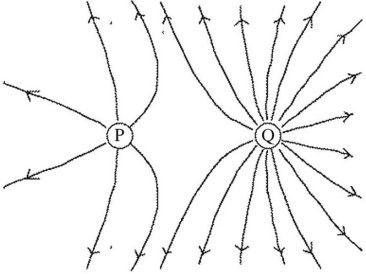Electric Field Lines: The figure shows electric field lines arising from two small charged particles P and Q. Consider the following two statements:(i) The charge on P is smaller than the charge on Q.(ii) The electrostatic force on P is smaller than the force on Q.Which of the above statements are true?
A. Only (i) is true.
B. Only (ii) is true.
C. Both (i) and (ii) are true.
D. Neither (i) nor (ii) is true.
Answer: A
You might also like to view...
Which of the following is true regarding the masses of antimatter particles?
A) The mass of an antimatter particle is the same as that of its corresponding matter particle. B) The mass of an antimatter particle is always larger than that of its corresponding matter particle. C) The mass of an antimatter particle is always lower than that of its corresponding matter particle. D) The mass of an antimatter particle is the negative value of that of its corresponding matter particle. E) Antimatter has no mass.
Olbers's paradox makes an incorrect prediction that it gets dark at night because the Universe is:
A) eternal B) closed. C) static. D) flat.
Uniform Electric Fields: A spherical oil droplet with nine excess electrons is held stationary in an electric field between two large horizontal plates that are 2.25 cm apart. The field is produced by maintaining a potential difference of 0.3375 kV across the plates, and the density of the oil is 824 kg/m3. What is the radius of the oil drop? (e = 1.60 × 10-19 C)
Fill in the blank(s) with the appropriate word(s).
Two small objects, with masses m and M, are originally a distance r apart, and the gravitational force on each one has magnitude F. The second object has its mass changed to 2M, and the distance is changed to r/4. What is the magnitude of the new gravitational force?
A. 32F B. 2F C. F/32 D. F/16 E. 16F